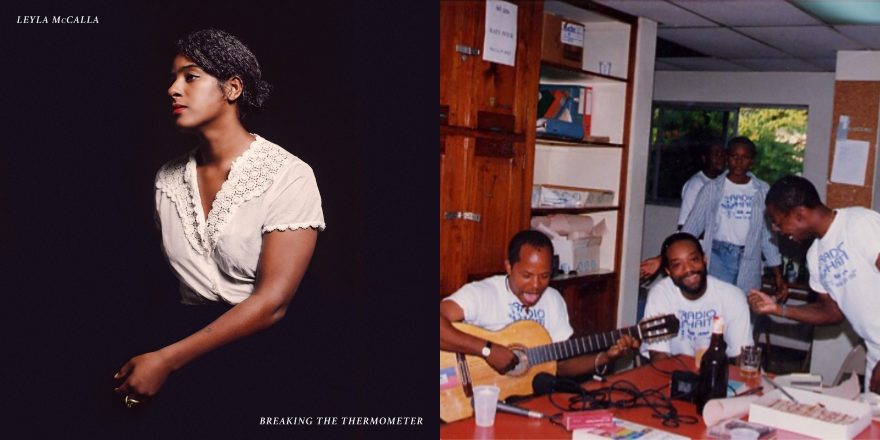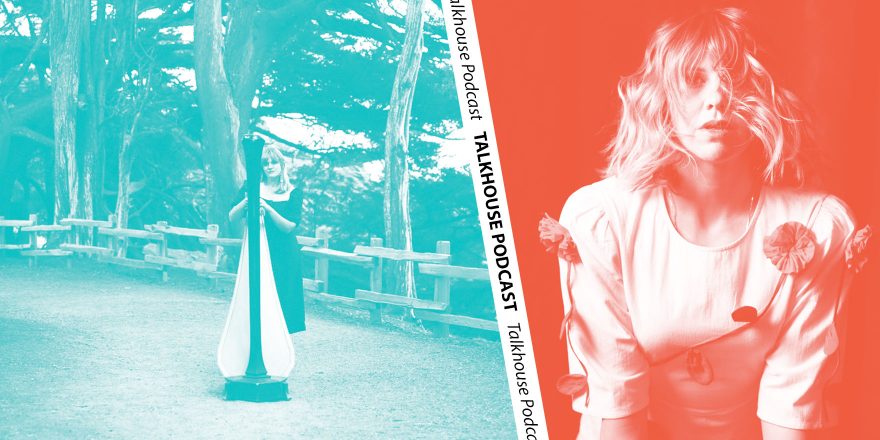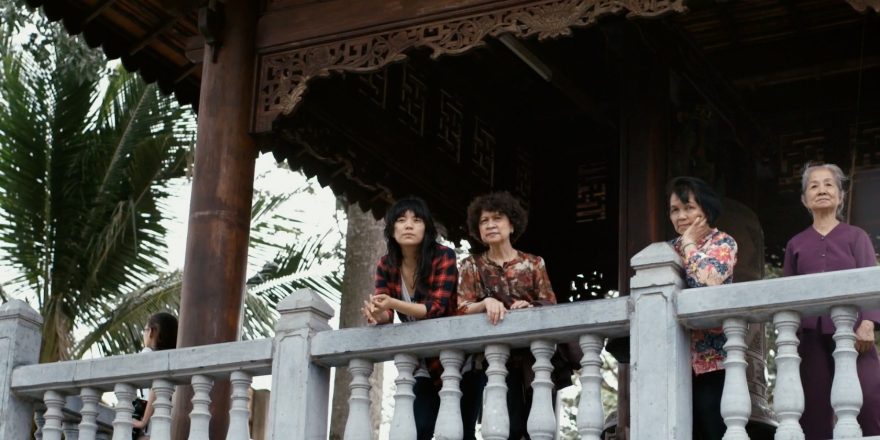My memories of Haiti come to me in waves.
I hear the sound of sweeping in the courtyard — or is it on the other side of the concrete wall into the adjoining compound? I ask my grandmother’s husband if we can go and see the goats. I hear bleating on the other side — or did he ask me if I wanted to do that? I can’t remember exactly. He leads my sister and me up a ladder onto the roof of the small concrete house. He has been drinking rum and he starts to sing, “The roof, the roof, the roof is on fire! We don’t need no water let the motherfucker burn!” We laugh like hyenas and then my father calls. He says, “Get my daughters the hell off of that roof!” and the fun is over.
Did I dream this?
Roosters crow loudly in the morning, but really at any old time. The faint sound of drums plays into the night in the distance. I smell coffee in the morning and eat perfectly burnt rice for breakfast. We call that gratin — and that becomes one of my favorites. My sister reminds me that my grandmother gathered a group of Vodou drummers to play at her sixth birthday party. I don’t remember that.
◊
I was first approached about creating a multimedia performance based on the archives of Radio Haiti by Duke University in 2016, when I was touring my album A Day for the Hunter, A Day for the Prey. Radio Haiti was a radio station acquired in 1970 by an agronomist turned journalist named Jean Leopold Dominique. He was a linguistically gifted firestarter — charismatic, outspoken, charming, and a vociferous voice for what democracy could look like in Haiti. Tragically, Dominique was gunned down in the courtyard of the Radio Haiti compound on April 3, 2000. His assassination remains unsolved.
Duke Performances (the presenters at Duke University) created a series called “From the Archives” that pairs an artist with an archive, thereby bringing the archive to life and not just leaving it to the domain of researchers and academics. In 2015, when Duke acquired the archive, Radio Haiti was very much not on my radar. Surely, I must have listened to it as a Haitian-American child visiting the country without knowing what I was listening to. That said, I was hungry for a challenge and I wanted a project that would help me expand my creative vision into new realms, and in doing so, remove any unnecessary self-imposed limitations as an artist.
As someone who is fiercely interested in learning more about Haiti as well as the preservation and education of Haitian history, I loved the idea. I imagined telling the story of Radio Haiti by weaving archival video footage and audio recordings into a rich sonic landscape. Though my primary interest was rooted in composing and arranging the music, there was a certain shape that I imagined this piece would take, incorporating different media — visuals, dance, archival recordings — into storytelling.
My collaborators and I settled on the name Breaking the Thermometer to Hide the Fever. The title is based on a quote in one of Dominique’s editorials where he says that the independent press is the thermometer of the people; you can break the thermometer, but it won’t hide the fever. I felt that that turn of phrase was imbued with meaning in bringing truth to light. During much of the research phase of the project, I found parallels between the human rights violations in Haiti in the ‘70s and ‘80s under Duvalier and the Trump Administration in the United States. Perhaps even as Americans, we could understand the concept of political repression and its effects on freedom of speech.
There are a number of collaborators who deeply impacted my journey in creating this work. I was guided through the archive in June of 2017 by Laura Wagner, an anthropologist turned archivist, whom I had befriended years earlier in Haiti through my mother. My own understanding of Haitian Kreyòl is elementary, and though Laura is a white Jewish woman from California, she lived in Haiti for many years while completing her doctorate in anthropology and is completely fluent in Kreyòl and French.
As a starting point, Laura asked me what I was interested in listening to and we sort of went from there. I wanted to know more about life under Duvalier, about Vodou and about migrants fleeing Haiti by boat — something that is still happening today and that I recalled hearing about in the news growing up in the States. Navigating the terrain of the archive felt like trying to understand the world of Radio Haiti within the complicated political situations in Haiti. Laura created a historical timeline of Radio Haiti and Haitian history. Mixed in with intense journalistic reporting, there were moments of levity in the recordings — jingles, commercials, sometimes even an entire album of music. It was an overwhelming amount of information. I remember asking myself many times how the hell was I going to make a cohesive artistic statement with all of this information? To add to it all, because of my rudimentary Kreyòl — and, if I’m being honest, French — I needed to listen to the recordings over and over again with a lot of translating from Laura. Over the years of the project, she created various Google Drives with archival recordings that aligned with my interests and introduced me to some of Jean Dominique’s editorials in which his linguistic gifts and turns of phrases were powerful and plentiful. She also created a parallel historical timeline where I could see the correlation between Haitian history and significant moments in the story of Radio Haiti, including presidential elections, coups, exiles, assassinations.
A huge piece of learning how to create a story of this was working with a director who had experience in devised theater, a term I only learned while working on this project. Among the names suggested to me as potential directors, Kiyoko McCrae immediately stood out. Kiyoko is an artist based in New Orleans who has been a part of my friend circle since I moved to the city in 2010. As a Japanese-American artist, I felt confident that we could find some synergy. I invited Kiyoko into the process and we took a research trip to Duke together. Kiyoko’s creative vision would turn out to be essential to bringing Breaking the Thermometer to Hide the Fever into being.
Beyond the research at Duke, Kiyoko and I did an artist residency in the fall of 2019 at the Contemporary Arts Center in New Orleans where we invited our first sound and video projection designer, Kyle Sheehan, and scholar and historian Laurent Dubois, into the process of brainstorming ideas for the creative expression of the archive. I had made a series of song demos based on some of the recordings in the Google Drives and we collectively listened to them and made drawings to express what we heard. The emotional feeling of the songs really came through in everyone’s drawings and we collectively talked about what each song felt like.
A lot of my nostalgia for Haiti, and anecdotes from my childhood visits, rose to the fore. The feelings of being caught between my Haitian and American identities came up a lot. Kiyoko prompted me to do some writing exercises that helped me to define some of the most poignant moments with my relationship to Haiti. The summer of 1995 that I spent in La Pleine, a neighborhood on the outskirts of Port-au-Prince, in my grandmother’s courtyard came up a lot. That period marks the most concentrated time that I have ever spent in Haiti, and where my memories are blurry, but also influential. The more that I was learning about Radio Haiti, the more I was forced to confront my own experiences about Haiti and Haitian-ness. Kiyoko felt that my story and life experiences growing up Haitian-American could serve as an entry point for audiences into the world of Radio Haiti.
As Kiyoko, Kyle, and I started to stitch together the recordings that grabbed our attention and contributed to the story we were crafting, we had the idea to do some interviews to incorporate into the sound design. I decided that I would love to interview journalist Michèle Montas, the widow of Jean Dominique who also co-directed the station with him. I had known of Michèle and had met her a few times in my life, most notably when I was 15 years old and my father’s organization, the National Coalition for Haitian Rights (NCHR), hosted a showing of the Jonathan Demme documentary The Agronomist, which tells the story of Jean Dominique’s life and legacy.
I remember feeling nervous and self-conscious speaking to Michèle. She has lived through so much — assassination attempts on her own life, exiles, and the pain of seeing her spouse slain. She is a living monument to the struggles for freedom of speech in the later part of the 20th century in Haiti. As I got deeper into the project, I was navigating waves of imposter syndrome. Perhaps I was not the right person to tell the story of Radio Haiti, and perhaps there was no way to tell the full story; I felt caught in my feelings of not being Haitian enough to be a creative ambassador for the archive. I was battling self-doubt, and being the transparent over-sharer that I am, confided these feelings in her. I will never forget her response. She said that there in an umbilical cord between Haiti and all Haitians. There are so many people of Haitian descent of my generation who grew up in the States and don’t fully identify as either Haitian or American, and they were still looking for their roots and for the things that would attach them to the country. It didn’t fully register at the time, but this strengthened my resolve in overcoming any fragilities in my ego, and is a thought that kept me on track as I realized that I could only tell the story from my perspective and that however limited, my perspective is legitimate.
When I consider all of the serendipity and life experiences that went into the making of this project, I am confronted by all of the ways in which the project could have never happened. Radio Haiti endured many attacks on the physical station, bullet holes littered the walls of the station throughout years of exile. The Ton Ton Macoutes, Duvalier’s paramilitary troops ransacked the station, defecating and peeing on the tapes. But the Radio Haiti tapes survived. They survived through time, humidity, exiles, earthquakes, and coups. They survived despite the sacrifices journalists were making with their lives to tell the stories of people who mattered.
Despite the fact that the archive contains countless hours of audio recordings, my research is still just scratching the surface. It makes me wonder if all art lies on a spectrum between what we remember, what we believe, and what we can imagine. In a world of media that often fails to create nuanced pictures of what is happening, and that only values art once it has become a commodity, I wonder if more collaborations like this could make up for the dearth of education that we receive about cultures and concepts outside of Western conception.
I asked Michèle if she felt like she had failed after she decided to close the Radio Station in the year 2003. She had just survived an assassination attempt and she was resolute in declining any admission of defeat. In essence, she expressed that what we all need is to fight for what we believe in, from wherever we are and however we can.
Viv Radio Ayiti! Ayibobo!
(Photo Credit: right, Duke University)






